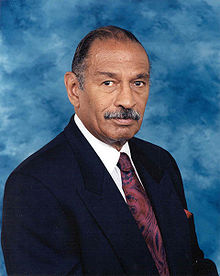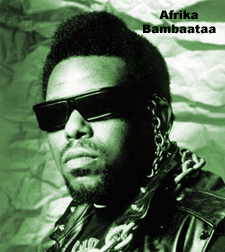Essential Articles on Hip Hop
History of Hip Hop by Davey D(1985)
Afrika Bambaataa’s definition of Hip Hop (1996)
Grandmaster Flash’s Definition of Hip Hop (1996)
A Historical definition of the Term Rap pt1 by Davey D
A Historical Definition of the Term Rap pt2 (Street Hustlers to Revolutionary Poets) by Davey D
Grand Wizzard Theodore Explains the Origins of the Scratch and Beyond
The History of Hip Hop And Funk.. Bay Area Style by Davey D (1996)
The Connection Between Hip Hop, New Wave and Punk by Davey D (2005)
A Day In the Bronx Remembering the Black Spades & their Connection to Hip Hop by Davey D
Hip Hop Has Always Been Political by Davey D (2008)
History of Electrofunk What Does It All Mean?
When The Fever Was Mecca..The Legacy of Disco Fever by Mark Skillz (2009)
DJ Eddie Cheeba & DJ Hollywood..The Disco Side of Hip Hop by Mark Skillz (2009)
One Night at the Executive Playhouse Kool Herc vs Pete DJ Jones by Mark Slillz (2007)
Industry Articles
Does the Music Industry need a Bail Out Plan? by Tony Muhammad (2009)
Payola The Dirty Industry Practice Ruining Hip Hop by Davey D (2004)
Hip-Hop, Copyright + Cultural Legacy, Part 2: -by Jeff Chang (2010)
Why Hip Hop is Dead by Lethal Wonder
Should New York’s Proposed Hip Hop Museum Include Gangsta Rap
I Say Let Them (Gangsta Rappers) Get Their Own Museum by Furious Styles
Casual Weighs in on Museum Controversy Around Gangsta Rap by Casual


 This is part 2 of an article we penned called
This is part 2 of an article we penned called 

 Gil Scott-Heron is often called the Godfather to Rap. It was a title he shunned, stating he preferred to be known as a bluesologist. Nevertheless, Heron was a towering figure whose signature song Revolution Will Not be Televised was redone by too many Hip Hop artists to name. Cuts like
Gil Scott-Heron is often called the Godfather to Rap. It was a title he shunned, stating he preferred to be known as a bluesologist. Nevertheless, Heron was a towering figure whose signature song Revolution Will Not be Televised was redone by too many Hip Hop artists to name. Cuts like  The Watts Prophets have not only been heralded as important figures in the emergence of West Coast rap, but in 1970 they released an album called ‘Rappin’ Black in a White World’. Many consider that to be the first to use the word ‘Rap’ to describe a recording that featured rhyming, This groundbreaking album proceeds ‘Rapper’s Delight‘ by almost 10 years. They also featured a woman vocalist named Dee Dee McNeil who isn’t often named when speaking of the Watts prophets
The Watts Prophets have not only been heralded as important figures in the emergence of West Coast rap, but in 1970 they released an album called ‘Rappin’ Black in a White World’. Many consider that to be the first to use the word ‘Rap’ to describe a recording that featured rhyming, This groundbreaking album proceeds ‘Rapper’s Delight‘ by almost 10 years. They also featured a woman vocalist named Dee Dee McNeil who isn’t often named when speaking of the Watts prophets






 When James Brown entered the scene all that changed. He delivered the drum front and center. Vincent noted that James Brown brought out a more prominent rhythmic foundation for the music and introduced the important concept of ‘Hitting on the One’. James Brown focused his entire band including the complex horn, rhythm guitar and keyboard arrangements of his band mate Fred Wesley, Pee Wee Ellis and Nat Jones to ‘deliver on the one’. James Brown punctuated his efforts by using his voice with his vintage grunts, groans and screams as a binding force which also drew everything ‘on the one’. It seems so simple and commonplace today, but back then it was ground breaking.
When James Brown entered the scene all that changed. He delivered the drum front and center. Vincent noted that James Brown brought out a more prominent rhythmic foundation for the music and introduced the important concept of ‘Hitting on the One’. James Brown focused his entire band including the complex horn, rhythm guitar and keyboard arrangements of his band mate Fred Wesley, Pee Wee Ellis and Nat Jones to ‘deliver on the one’. James Brown punctuated his efforts by using his voice with his vintage grunts, groans and screams as a binding force which also drew everything ‘on the one’. It seems so simple and commonplace today, but back then it was ground breaking.

































 Kool DJ Herc, originally from Jamaica, is credited with extending these breaks by using two turntables, a mixer and two of the same records. As DJs could re-cue these beats from one turntable to the other, finally, the dancers were able to enjoy more than just a few seconds of a break! Kool Herc also coined the terms “b-boy” and “b-girl” which stood for “break boys” and “break girls.” At one of Kool Herc’s jams, he might have addressed the dancers just before playing the break beats by saying, “B-Boys are you ready?! B-Girls are you ready?!” The tension started to mount and the air was thick with anticipation. The b-boys and b-girls knew this was their time to “go off!”
Kool DJ Herc, originally from Jamaica, is credited with extending these breaks by using two turntables, a mixer and two of the same records. As DJs could re-cue these beats from one turntable to the other, finally, the dancers were able to enjoy more than just a few seconds of a break! Kool Herc also coined the terms “b-boy” and “b-girl” which stood for “break boys” and “break girls.” At one of Kool Herc’s jams, he might have addressed the dancers just before playing the break beats by saying, “B-Boys are you ready?! B-Girls are you ready?!” The tension started to mount and the air was thick with anticipation. The b-boys and b-girls knew this was their time to “go off!” “Power moves” is a debatable term since it is questionable which movement requires more power: footwork and freezes or spins and gymnastics. One notable point introduced by B-Boy Ken Swift is that spins are fueled by momentum and balance which require less muscular strength than footwork and freezes. The laws of physics prove this to be true: spins require speed and speed creates momentum. The advent of “power moves” brought about a series of spins which became the main focus of the media and the younger generations of dancers. The true essence of the dance was slowly overshadowed by an over abundance of spins and acrobatics which didn’t necessarily follow a beat or rhythm. The pioneers didn’t separate the “power moves” from the rest of the dance form. They were B-Boys who simply accented their performance with incredible moves to the beat of the music.
“Power moves” is a debatable term since it is questionable which movement requires more power: footwork and freezes or spins and gymnastics. One notable point introduced by B-Boy Ken Swift is that spins are fueled by momentum and balance which require less muscular strength than footwork and freezes. The laws of physics prove this to be true: spins require speed and speed creates momentum. The advent of “power moves” brought about a series of spins which became the main focus of the media and the younger generations of dancers. The true essence of the dance was slowly overshadowed by an over abundance of spins and acrobatics which didn’t necessarily follow a beat or rhythm. The pioneers didn’t separate the “power moves” from the rest of the dance form. They were B-Boys who simply accented their performance with incredible moves to the beat of the music. In Los Angeles, California, Don Campbell, also known as Don Cambellock, originated the dance form “locking.” Trying to imitate a local dance called the “funky chicken,” Don Campbell added an effect of locking of the joints of his arms and body which became known as his signature dance. He then formed a group named “The Lockers,” who all eventually shared in the development of this dance. The steps and moves created by these pioneers were named and cataloged. Some of these include: the lock,points, skeeters, scooby doos, stop n’go,which-away and the fancies. Certain members of The Lockers” incorporated flips, tucks, dives and other aerial moves reminiscent of the legendary Nicholas Brothers. The main structure of the dance combined sharp, linear limb extensions and elastic-like movement.
In Los Angeles, California, Don Campbell, also known as Don Cambellock, originated the dance form “locking.” Trying to imitate a local dance called the “funky chicken,” Don Campbell added an effect of locking of the joints of his arms and body which became known as his signature dance. He then formed a group named “The Lockers,” who all eventually shared in the development of this dance. The steps and moves created by these pioneers were named and cataloged. Some of these include: the lock,points, skeeters, scooby doos, stop n’go,which-away and the fancies. Certain members of The Lockers” incorporated flips, tucks, dives and other aerial moves reminiscent of the legendary Nicholas Brothers. The main structure of the dance combined sharp, linear limb extensions and elastic-like movement. In 1976, The Electronic Boogaloo Lockerswas formed in Fresno, California by Sam “Boogaloo Sam” Soloman, Nate “Slide” Johnson and Joe “Slim” Thomas. Since the group’s inception, Sam has continued to recruit and help each member master his individual form. Some of Sam’s early inspirations were Chubby Checker‘s “Twist;” a James Brown dance called “the Popcorn;” “the Jerk;” cartoon animation and the idiosyncrasies of everyday people. From these many influences, Sam combined incredible steps and moves conceiving a dance form which he named “Boogaloo.” This form includes isolated sharp angles, hip rotations and the use of every part of the body. Sam’s brother, Timothy “Popin’ Pete” Soloman, described Boogaloo as a dance which was done by moving the body continuously in different directions.
In 1976, The Electronic Boogaloo Lockerswas formed in Fresno, California by Sam “Boogaloo Sam” Soloman, Nate “Slide” Johnson and Joe “Slim” Thomas. Since the group’s inception, Sam has continued to recruit and help each member master his individual form. Some of Sam’s early inspirations were Chubby Checker‘s “Twist;” a James Brown dance called “the Popcorn;” “the Jerk;” cartoon animation and the idiosyncrasies of everyday people. From these many influences, Sam combined incredible steps and moves conceiving a dance form which he named “Boogaloo.” This form includes isolated sharp angles, hip rotations and the use of every part of the body. Sam’s brother, Timothy “Popin’ Pete” Soloman, described Boogaloo as a dance which was done by moving the body continuously in different directions.